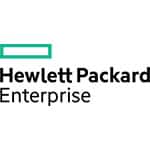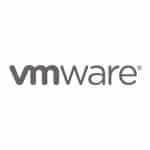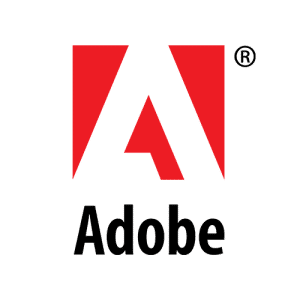In the world of containerization and enterprise cloud infrastructure, few debates are as active and relevant as OpenShift vs Kubernetes. As companies increasingly adopt cloud native applications and look for scalable container orchestration platforms, professionals must decide which tool to master first. The answer isn’t as straightforward as it once was. In 2025, both platforms serve overlapping yet distinct roles across cloud environments, hybrid deployments, and enterprise application development pipelines.
This blog breaks down the differences between OpenShift and Kubernetes, explores real-world use cases, and highlights key platform features. It also explains how certifications backed by EX280 exam dumps and EX200 exam dumps can help you build practical skills and boost your career in container orchestration, cloud platforms, and enterprise DevOps roles.
Choosing wisely can also shape your career path in DevOps, cloud, and enterprise IT, roles that rank among the highest-paying cloud jobs in 2025.
What Is Kubernetes?
Kubernetes is the open-source container orchestration software originally developed by Google and now managed by the Cloud Native Computing Foundation. It automates the deployment, scaling, and operation of containerized applications across clusters of nodes. Kubernetes allows developers and system administrators to manage container images, networking, and storage in a highly portable and flexible manner.
Key Features of Kubernetes:
- Support for multiple container runtimes
- Scalable control plane
- Native support for role based access control
- Flexible kubernetes namespaces for isolation
- Open integration with third party tools
- Emphasis on manual configuration and CLI-based workflows
Despite its power, Kubernetes can feel overwhelming for beginners. It often requires manual setup, lacks a default UI, and demands a deep understanding of the underlying system, making it one of the hardest cloud certifications for those who pursue Kubernetes-focused credentials.
What Is Red Hat OpenShift?
Red Hat OpenShift is a comprehensive container platform built on top of Kubernetes. Developed and supported by Red Hat, OpenShift enhances Kubernetes with enterprise-ready features such as integrated image registry, openshift templates, and a full intuitive web console. It’s optimized for both application development and container management, offering a more user-friendly, secure, and automated experience.
Additional Features of OpenShift:
- Streamlined installation and lifecycle management
- Integrated CI/CD for continuous integration and continuous delivery
- Strong emphasis on enhanced security and secure default setup
- Container image management features built in
- Support for self managed deployment models and cloud service providers
- Red Hat’s robust and scalable architecture
Unlike Kubernetes, which relies heavily on external tools, OpenShift offers a secure, ready-to-use enterprise stack out of the box. This makes it popular among enterprises exploring future trends in cloud computing such as hybrid deployments and compliance-driven DevOps.
OpenShift vs Kubernetes: Key Differences
| Feature | Kubernetes | OpenShift |
|---|---|---|
| Installation | Manual or tool-assisted | Guided installer, enterprise-ready |
| UI/UX | Optional dashboard | Full intuitive web console with monitoring |
| Security | Customizable, requires manual configuration | More secure default setup, built-in policies |
| Image Registry | External setup | Integrated image registry included |
| RBAC/OAuth | Manual setup | Built-in role based access control & OAuth |
| CI/CD | External integrations | Native OpenShift builds, Jenkins pipelines |
| Templates | Custom YAMLs | Pre-built openshift templates for speed |
| Vendor | CNCF/Community | Enterprise-grade by Red Hat |
This table highlights the contrast between Kubernetes’ flexibility and OpenShift’s turnkey nature. OpenShift appeals more to enterprise teams seeking standardization, robust security measures, and compliance.
Can OpenShift Replace Kubernetes?
The short answer: no. OpenShift does not replace Kubernetes; rather, it extends it. As an origin Kubernetes distribution, OpenShift layers enterprise features onto core Kubernetes. It’s ideal for organizations that need to deploy applications securely at scale without building everything from scratch.
However, for purists and system engineers wanting full control or self hosted Kubernetes, sticking with base Kubernetes may make more sense. This is especially true for roles involving deep kubernetes apis or container orchestration tools.
If you’re just starting, OpenShift can be easier to learn because of its integrated tools. For those exploring the easiest cloud certifications for beginners, OpenShift often provides a more approachable entry point.
Application Development: Where They Differ Most
Both platforms support modern application development, but they cater to different workflows. Kubernetes is ideal for DevOps teams that prefer building custom pipelines using third party plugins. OpenShift, on the other hand, integrates everything—developer tools, container image management features, and CI/CD pipelines into a single user friendly interface.
This built-in support enables developers to manage containerized applications with just a few clicks, improving productivity across openshift projects.
Kubernetes Excels At…
- Flexibility across cloud platforms like Google Cloud
- Handling low-level container orchestration tasks
- Supporting varied kubernetes containers and container runtimes
- Open ecosystem with a wide range of kubernetes features
In short, Kubernetes excels at being the Swiss Army knife of container orchestration software—modular, customizable, and ecosystem-rich.
OpenShift Shines When…
- Enterprises need built in security features and governance
- Admins want support for OpenShift from a trusted vendor
- Teams demand consistent environments across cloud service providers
- Organizations want to avoid vendor lock in through self managed deployment models
OpenShift’s full-stack solution is why so many large-scale system integrators rely on it for mission-critical workloads.
Certifications That Help You Master Both
If you’re aiming to learn either or both—platforms in 2025, Red Hat’s certifications provide the structure and credibility needed to get hired. Here’s what to focus on:
EX280: Red Hat Certified Specialist in OpenShift Administration
Perfect for IT pros working with the OpenShift Container Platform. This hands-on exam tests your ability to configure container orchestration, manage container images, and operate real kubernetes clusters.
EX200: Red Hat Certified System Administrator (RHCSA)
Covers foundational Red Hat Enterprise Linux and is often the first step before EX280. Essential for those looking to bridge operating systems and container orchestration.
Other relevant certifications include Red Hat EX294 (Ansible), which supports automation in both OpenShift vs Kubernetes contexts. If you want to move into DevOps leadership or architect roles, these certifications also complement some of the best cloud certifications of 2025.
Real-World Use Cases: When to Use Which
- Startups or small teams may prefer Kubernetes for lower cost and DIY architecture
- Enterprises, especially those in regulated industries, lean toward Red Hat OpenShift for its security, stability, and additional tools
- Multi-cloud and hybrid cloud environments benefit from OpenShift’s flexibility
Final Verdict: OpenShift vs Kubernetes in 2025
The choice between OpenShift vs Kubernetes isn’t about which one is better—it’s about which one fits your goals.
- Choose Kubernetes if you want flexibility, lower vendor dependency, and enjoy deep customization.
- Choose Red Hat OpenShift if you’re pursuing roles in enterprises, need built-in governance, and prefer container orchestration with enterprise support.
In the end, knowing both platforms makes you a more versatile engineer. But if you’re job-hunting in 2025 and want maximum ROI, start with OpenShift, earn your EX280, and position yourself in the heart of enterprise DevOps.
Frequently Asked Questions (FAQs):
1. What does OpenShift vs Kubernetes mean for someone starting?
When people say OpenShift vs Kubernetes, they’re often comparing experience, not just features. Kubernetes is the core engine for container orchestration, while OpenShift adds enterprise-ready layers on top of it. So if you’re just starting and wondering which path to follow, understanding that OpenShift includes Kubernetes, but simplifies it for production use, can help you make a more confident decision.
2. Is OpenShift just a managed version of Kubernetes?
Not quite, but it’s close. In the OpenShift vs Kubernetes conversation, it’s important to remember that OpenShift includes Kubernetes under the hood. What sets it apart are the additional tools and baked-in features like an intuitive web console, integrated image registry, and native CI/CD pipelines. It’s Kubernetes, but wrapped with tools that reduce manual effort and speed up deployment.
3. How does OpenShift vs Kubernetes impact application deployment?
If you’re looking at OpenShift vs Kubernetes from an application development perspective, the biggest difference is how quickly you can go from writing code to running apps. OpenShift’s developer tools, openshift templates, and support for continuous integration make it faster to deploy in enterprise settings. Kubernetes supports this too, but usually requires third-party tools and more manual configuration.
4. Which platform is better for enterprise security?
This is a big one in the OpenShift vs Kubernetes debate. OpenShift often wins here because of its built-in security features—things like pre-configured role based access control, SCCs, and image validation. Kubernetes is secure, too, but requires more effort to implement the same policies. For enterprises with compliance requirements, OpenShift usually offers a stronger security posture out of the box.
5. What certifications help you understand OpenShift vs Kubernetes in practice?
If you want hands-on skills and career-ready knowledge, start with foundational Linux through Cert Empire’s EX200 exam dumps, then move to EX280 exam dumps to focus on real-world OpenShift admin tasks. These certifications walk you through the OpenShift vs Kubernetes landscape in a way that’s practical and relevant to current job roles.
Last Updated on by Team CE



























